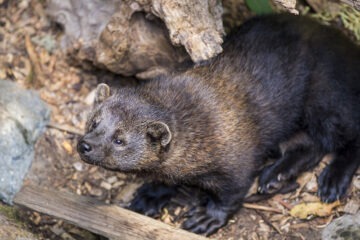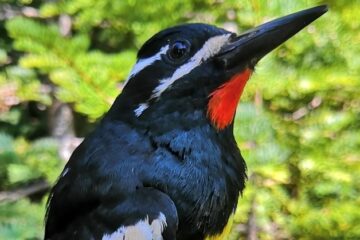Baseball bats might be stored away for the season (anyone else feeling World Series withdrawal?), but October is the perfect time to focus your attention on a different kind of bat: the chiropteran kind! Chiroptera, from the Greek cheir (hand) and pteron (wing), refers to the taxonomic order of the world’s only true flying mammals: bats.
Bat Week, celebrated in the days leading up to Halloween, calls attention to these extraordinary aviators. Other mammals, like flying squirrels, can glide from point to point, but only bats can propel themselves aloft, flapping their long, spindly arms and catching the air with membranes stretched across their fingers.
Yosemite’s cliffs, caves and forests provide homes for 17 species of bats (including seven myotis, or mouse-eared, bats):
- Big brown bat
- California myotis
- Canyon bat
- Fringed myotis
- Hoary bat
- Little brown myotis
- Long-eared myotis
- Long-legged myotis
- Mexican free-tailed bat
- Pallid bat
- Silver-haired bat
- Small-footed myotis
- Spotted bat
- Townsend’s big-eared bat
- Western mastiff bat
- Western red bat
- Yuma myotis
Bats can get a bad rap. We’ve shared in the past some reasons to love bats (quick refresher: bats help control insect populations, pollinate a variety of plants, use sounds to navigate the night, and can be downright cute). This year, we’re spotlighting a few Yosemite bats that have been designated as “special status” species in California. Like other vulnerable wildlife, bats face threats from habitat loss and human disruption; many are also jeopardized by the potential spread of white nose syndrome, a deadly fungal disease that has decimated bat populations on the East Coast and has been found in Washington State.
By shedding some light on these creatures of the night, we hope to inspire you to get to know Yosemite’s diverse bats—and we bet you’ll end up feeling a bit fonder of flying mammals! Without further ado, meet the…
… Flying Mammals of Yosemite…
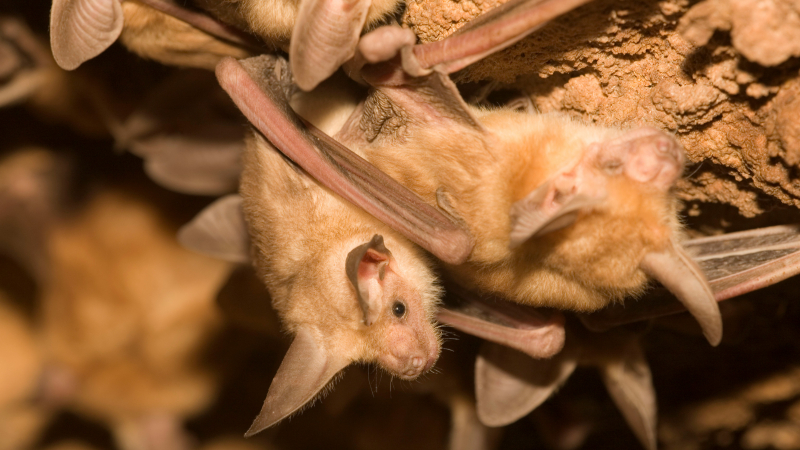
…pallid bat! We live in diverse landscapes in western North America, including mountains, deserts and woodlands, and roost in rocky crevices or hollow trees. Our diet is bug-based, with some hard-shelled insects thrown in for crunch. Unlike many other bats, which go for in-flight meals, we often pluck our food from the ground. We’re pretty social, and like to hang out in large groups.
As our name implies, we’re a bit on the pale side, with cream-colored fur. If you spot us awake, you might notice our extra-large eyes; if we’re napping, look for our big ears. Speaking of oversized otic organs, say hello to…
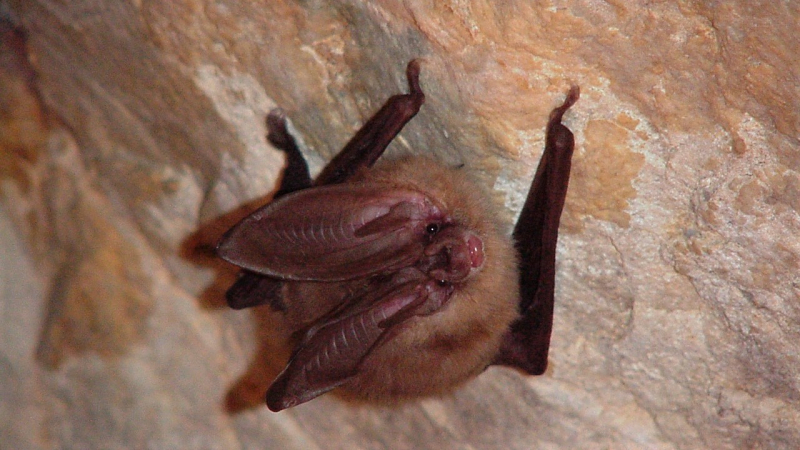
…Townsend’s big-eared bats. Yeah, yeah, yeah, we’ve heard it a thousand times: We have big ears. They’re tall, pointy and flexible. Some humans wear earrings, but we opt for ear-rolls – when we’re sleeping, our ears curl back over our heads, making us look a little like tiny, winged rams. You’ll find us in western North America, often in dark caves, or in abandoned mineshafts and buildings. We hope you don’t find us, though — we’re especially sensitive to human interference. If you disturb our roosting sites, we probably won’t come back.
On the food front, we’re partial to moths and other small bugs. Our big, swiveling ears come in handy at meal time, when we use low-frequency echolocation calls to detect prey. It’s helpful to have a well-honed hunting strategy, since we’re competing with a lot of other moth-eaters, including…
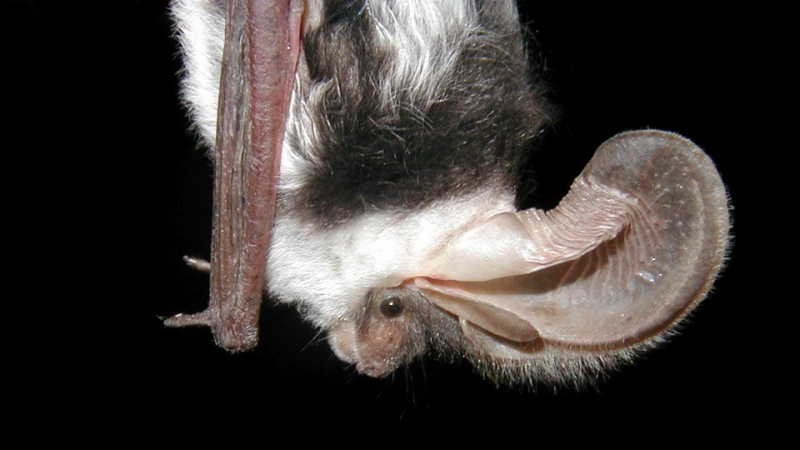
…spotted bats. We’re easily spotted (ha, that never gets old!) by the white spots on our shoulders and backside. Our ears aren’t quite as prominent and pointy as those of the Townsend’s big-eared bat, but they’re still helpful for hearing the soundwaves we rely on to find our favorite snacks: airborne bugs, especially moths. We stick to western North America, and prefer places with cliffs for roosting, but when it comes to elevation, we’re not picky: We’ve been spotted (still funny!) in deserts below sea level, and all the way up near 10,000 feet.
Now, since we’re on a roll with bats whose appearances match their names, get a gander at the…
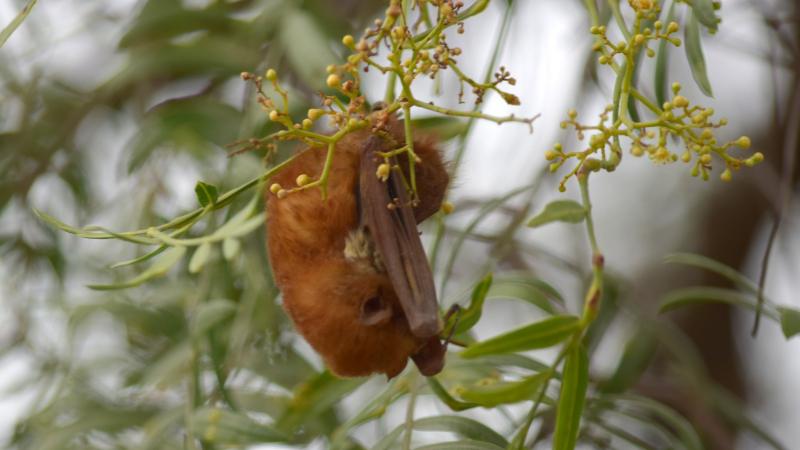
…western red bat. We sport — you guessed it — red fur. That’s not our only distinguishing feature, though; we also have large heads and short, round ears.
We tend to make our homes in trees, often near rivers or streams. We’re more solitary than other bats, and our living style makes us more vulnerable than our cave-dwelling peers to raptors and other hunters: Leaves and branches just don’t provide the same level of predator-protection as rocky caverns. Another fascinating fact: While many bats give birth to just one baby per year, we can have as many as five pups per litter! Those youngsters are ready to fly after just a few weeks.
Scientists have found us in western North America and South America; if you see a red-colored bat on the East Coast, though, that’s probably our cousin, the aptly named eastern red bat. If you’re curious about other flying mammals with multi-continent ranges, you can’t miss the…
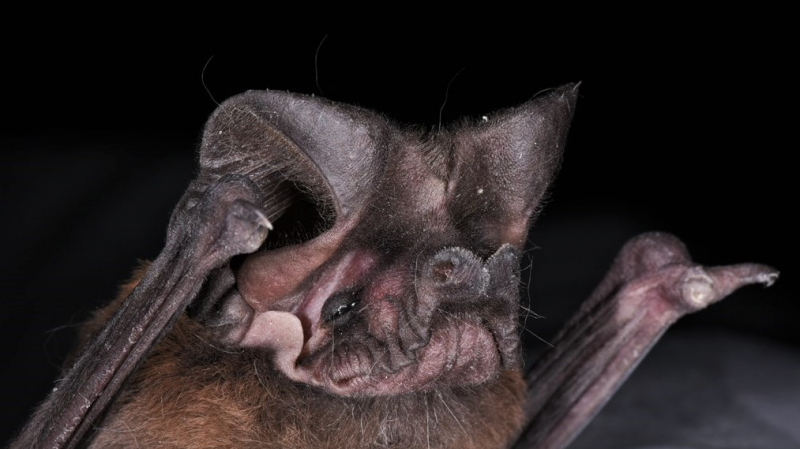
…western mastiff bat. You might as well think of us as western massive bats: We’re the largest native bat in the U.S., weighing in at over 2 ounces with a nearly 2-foot wingspan. Other can’t-miss physical features include bonnet-like ears that merge above our foreheads, and throat glands that emit special secretions (used by male mastiff bats to attract females). Like western red bats, we’re found in a relatively broad range, from South America north to central California. Unlike our red-bodied, small-eared neighbors, though, we often opt for homes with vertical rock walls. That’s not just an aesthetic choice: We can’t take flight from the ground, so search for living spaces with a long vertical drop, where we can jump out and get airborne.
Given our restricted aviation skills, it might come as a surprise that our diet includes land-bound insects, such as ants and crickets, but you can’t fight good taste.
Bat Week might be wrapping up, but we hope you keep learning about — and learning to love — these marvelous flying mammals. And in the meantime, do your part to protect bats: Help ensure they have ample food sources (insects!) and healthy foraging habitat, including wetlands and woodlands, and avoid disturbing roosts.
Thanks to our supporters for helping to fund efforts to study and protect wildlife such these flying mammals in Yosemite! Explore our website to learn more about projects you can make possible in the park.
Above: A big brown bat in flight. Photo: Angell Williams (licensed under CC BY 2.0: creativecommons.org/licenses/by/2.0/legalcode)
Sources: CADFW, NatureServe, Animal Diversity Web (University of Michigan)


